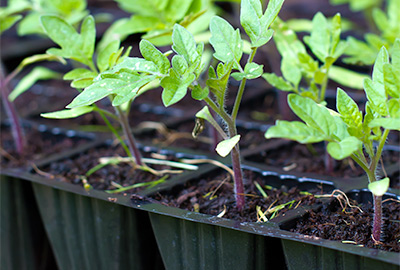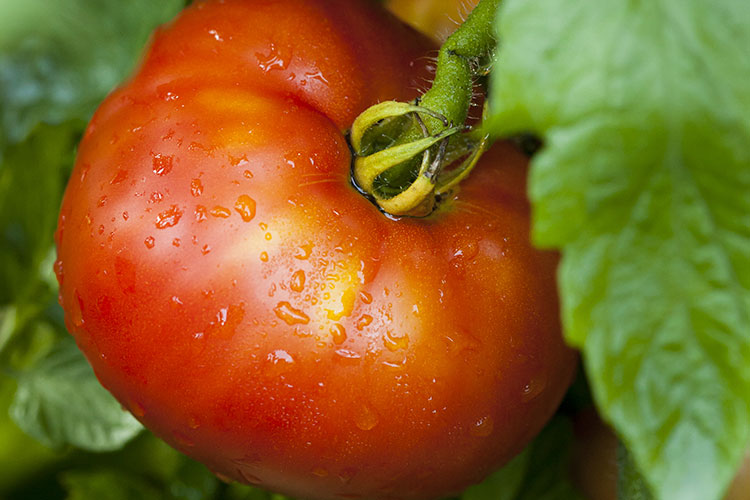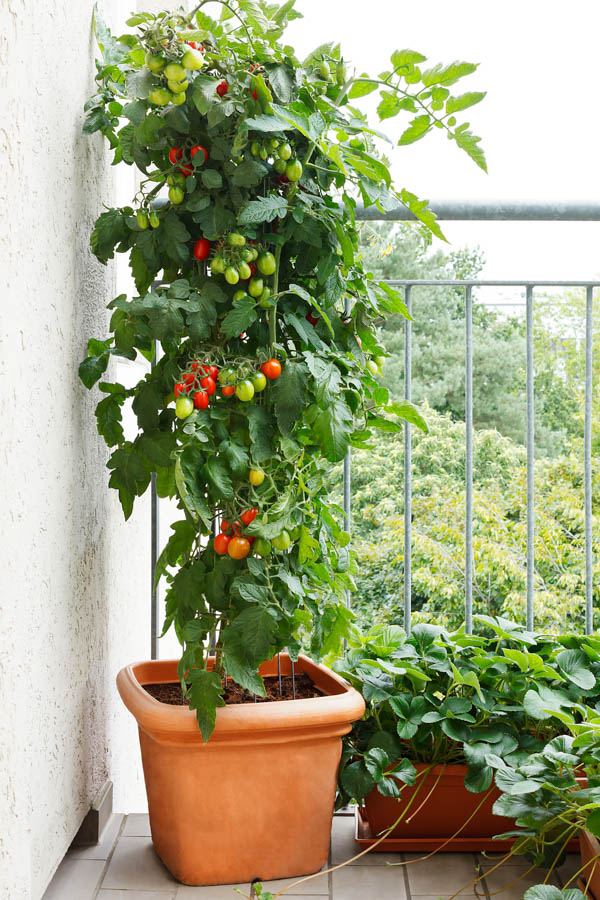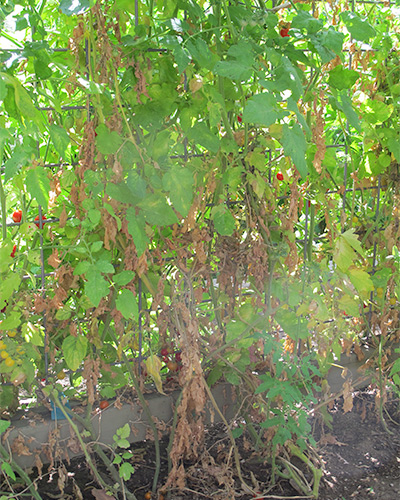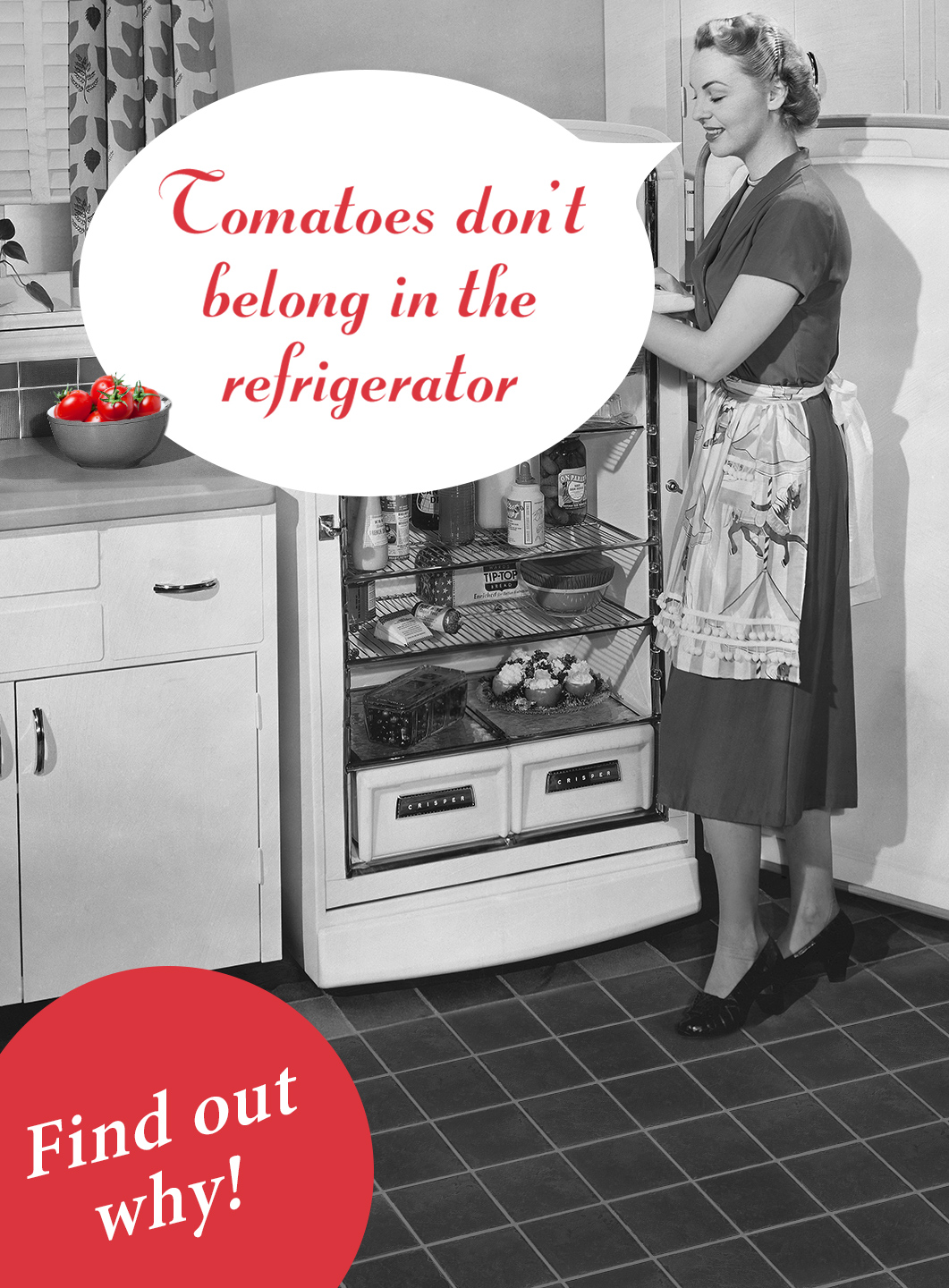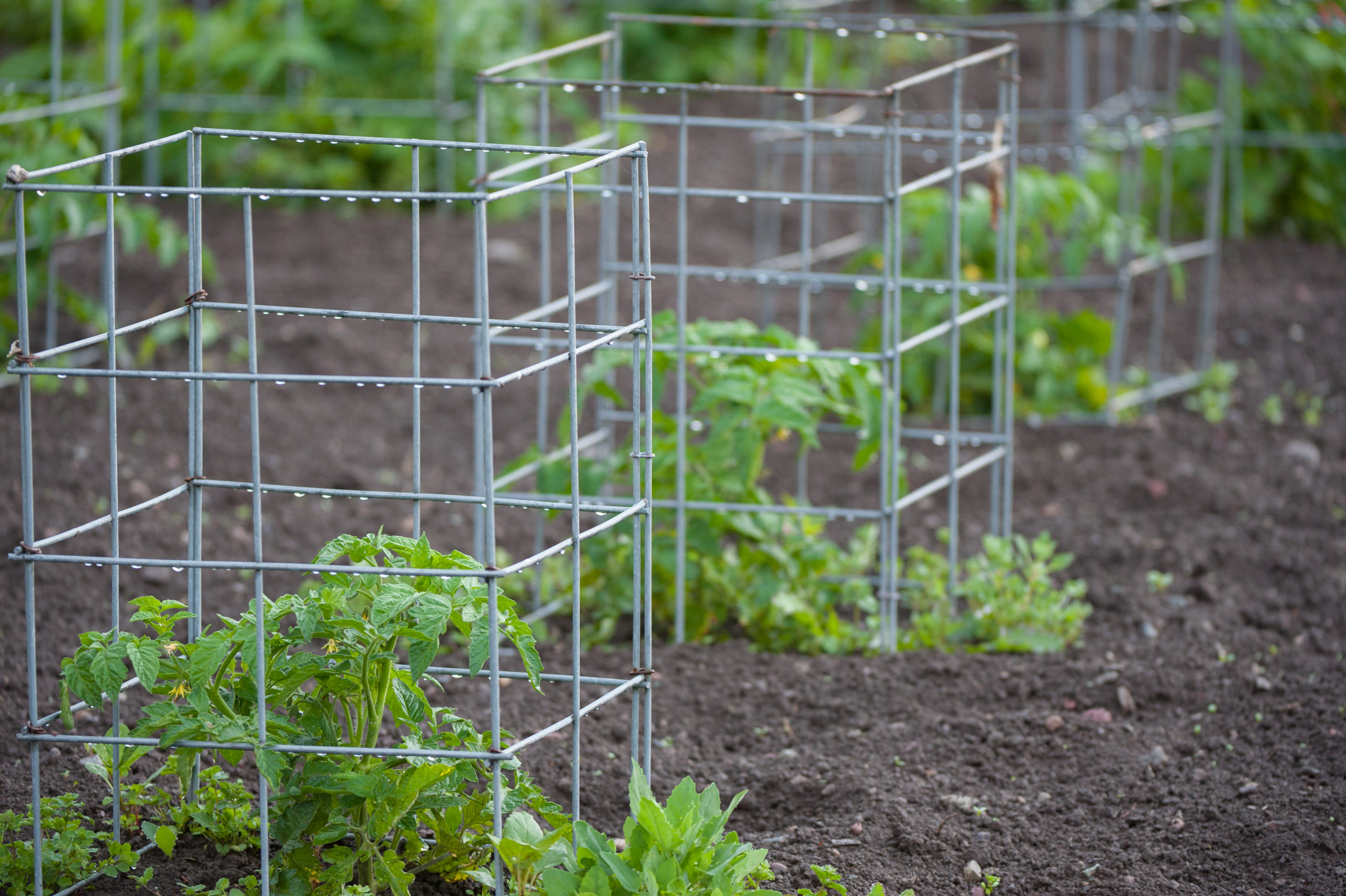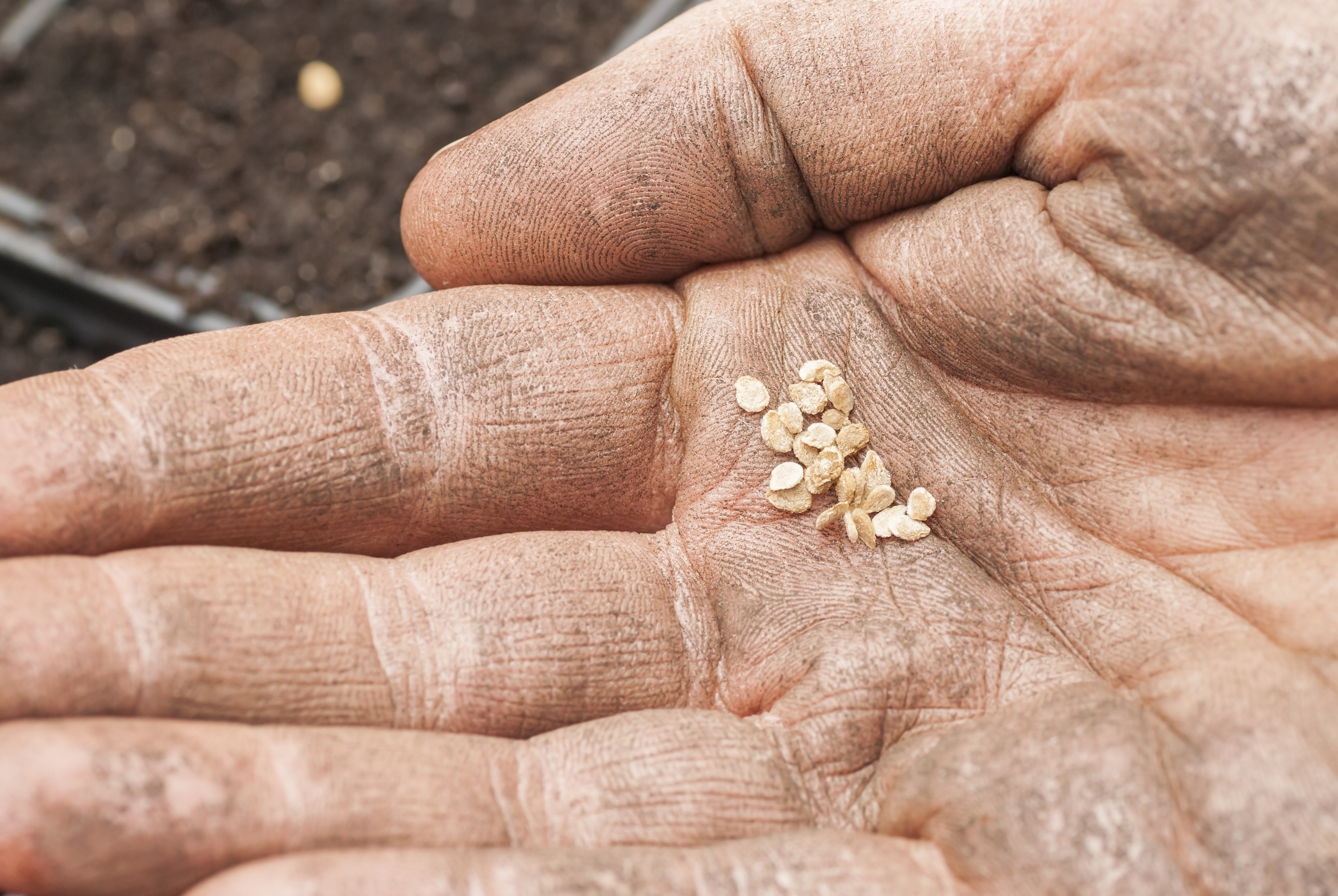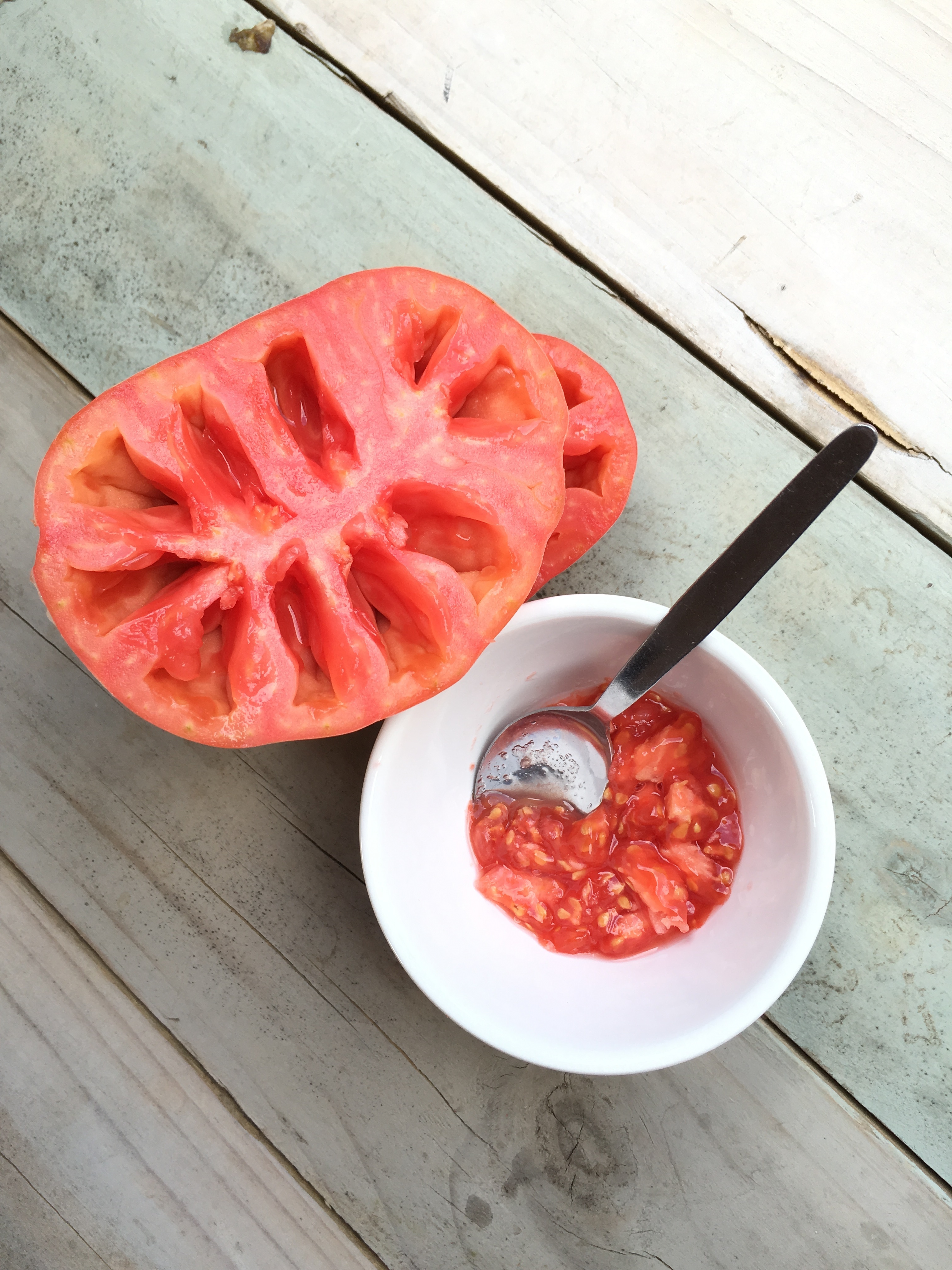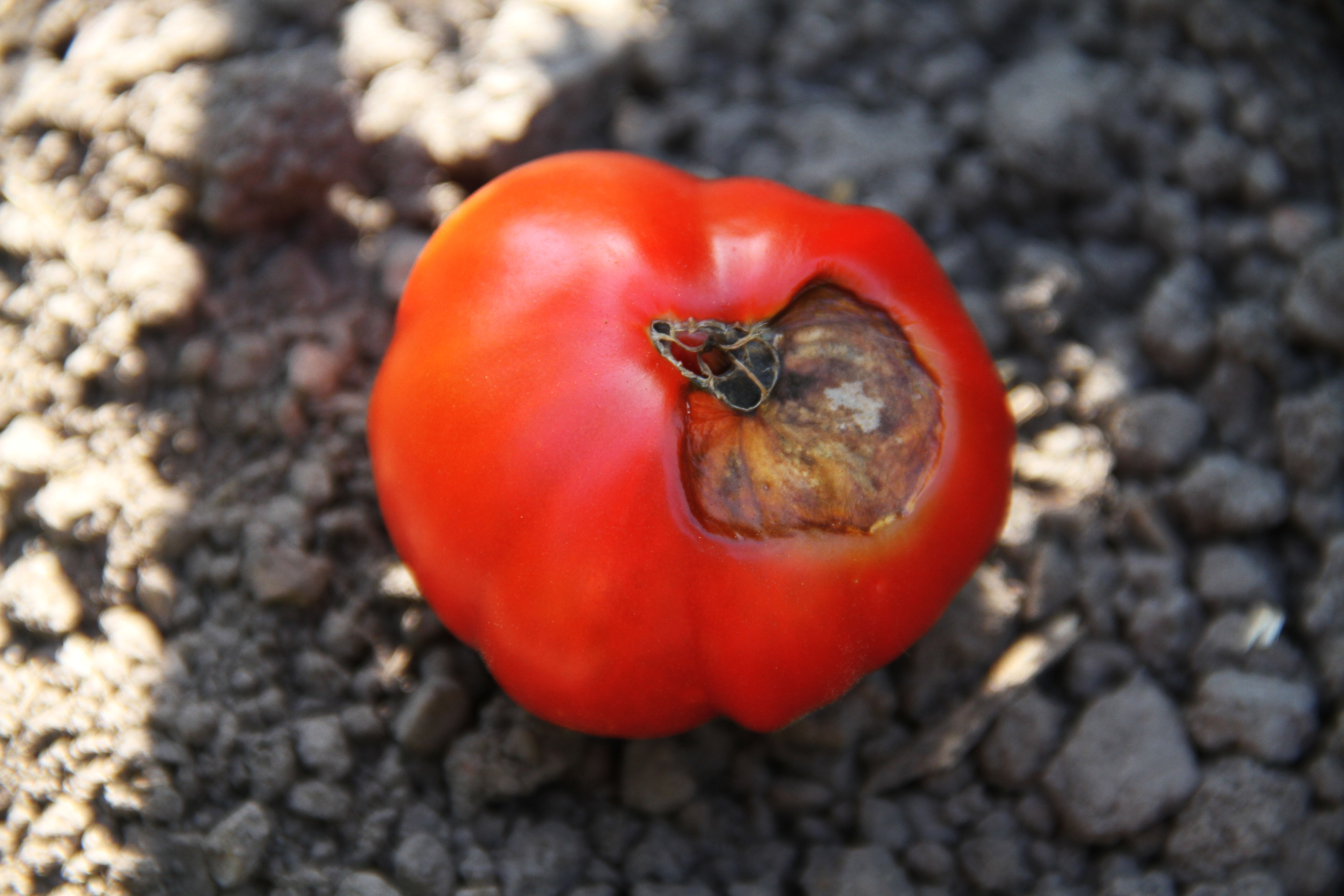Dig in
The Alphabet Soup of Tomato Disease Resistance
May 11, 2017
Nothing But Tomatoes
/ Organic Gardening: Vegetables
/ The Mighty Garden Archive
By: Ann Clary
Tomato seeds and plants may be sold with a string of letters after their variety names. These are codes for disease resistance. Common letter codes include: A Alternaria stem canker F Fusarium wilt FF Fusarium, races 1 and 2 FFF Fusarium, races 1,2 and 3 N Nematodes T Tobacco mosaic virus St Stemphylium gray leaf spot […]
Read More
GardenZeus Tips for Fertilizing Tomatoes During the Growing Season
May 11, 2017
Nothing But Tomatoes
/ Organic Gardening: Vegetables
/ The Mighty Garden Archive
By: Ann Clary
Tomatoes are heavy feeders, and perform best in rich, living soil with sufficient organic matter and calcium. GardenZeus recommends providing additional nitrogen and nutrients to tomatoes after transplanting and again once tomatoes begin to produce fruit. Add nitrogen in the form of diluted urea or a cup of chicken manure diluted in 4 gallons of water […]
Read More
Growing Tomatoes in Containers: 5 Steps for Success
April 25, 2017
Container Gardening
/ Nothing But Tomatoes
/ Organic Gardening: Vegetables
/ The Mighty Garden Archive
By: C. Darren Butler
Tomatoes can make excellent container plants, provided that a few important criteria are met. Choice of Type and Variety. Most cherry tomato varieties that are otherwise suited to your growing conditions will produce abundantly in containers in your zone. Many larger tomatoes will also do well in sizable pots or containers. For heirloom, indeterminate cherry […]
Read More
Growing Vigorous Tomatoes? Don’t Wait too Long to Provide Support
April 24, 2017
Nothing But Tomatoes
/ Organic Gardening: Vegetables
/ The Mighty Garden Archive
By: Ann Clary
Most tomato varieties will need staking or trellising to keep plants manageable, prevent vigorous tomato varieties from overwhelming other nearby vegetables, maximize growing space and maintain garden tidiness by requiring tomatoes to grow up rather than outward, allow for easier harvesting, and to reduce or prevent disease and pest problems caused by tomato fruits and […]
Read More
Why Don’t You Refrigerate Tomatoes?
March 31, 2017
Nothing But Tomatoes
/ Organic Gardening: Vegetables
/ The Mighty Garden Archive
By: Ann Clary
Most gardeners and cooks know that tomatoes should not be stored in the refrigerator, but they may not know why. The ideal storage temperature for fruits and vegetables varies among the many different varieties. Those fruits native to warmer regions are typically injured by temperatures as low as the common house refrigerator. Their cells begin […]
Read More
The GardenZeus Guide to Staking, Supporting, and Trellising Tomato Plants
October 2, 2015
Nothing But Tomatoes
/ Organic Gardening: Vegetables
/ Pruning and Other Seasonal Tasks
/ The Mighty Garden Archive
By: C. Darren Butler
Most tomato varieties will need staking or trellising to keep plants manageable, prevent vigorous tomato varieties from overwhelming other nearby vegetables, maximize growing space and maintain garden tidiness by requiring tomatoes to grow up rather than outward, allow for easier harvesting, and to reduce or prevent disease and pest problems caused by tomato fruits and […]
Read More
The GardenZeus Guide to Starting Tomato Seeds
October 2, 2015
Nothing But Tomatoes
/ Organic Gardening: Vegetables
/ The Mighty Garden Archive
By: C. Darren Butler
Tomato seeds are easy to germinate. GardenZeus recommends germinating tomato seeds directly in small pots for later transplanting; or on a paper towel kept moist in a covered glass dish, with sprouted seeds then moved into small pots or transplanted directly outdoors as soon as a root emerges. Tomato seeds can also be started directly […]
Read More
The GardenZeus Guide to Saving Tomato Seeds
October 2, 2015
Nothing But Tomatoes
/ Organic Gardening: Vegetables
/ The Mighty Garden Archive
By: C. Darren Butler
Saving seeds from a delicious heirloom or favorite open-pollinated tomato is simple, and can provide you with more than enough seeds to plant next year, as well as plenty to share with your friends. Although tomatoes are generally self-pollinating, they do occasionally cross-pollinate, and genetic traits may vary from seed to seed and fruit to […]
Read More
GardenZeus Solutions to Common Abiotic Problems with Garden Tomatoes
September 6, 2015
Nothing But Tomatoes
/ Organic Gardening: Vegetables
/ The Mighty Garden Archive
By: C. Darren Butler
Blossom Drop: Blossoms falling without setting fruit is one of the most common and frustrating problems with tomato plants. It may be caused by temperatures that are too warm or too cold, high or low humidity, lack of pollination, too much or too little water, or too much or too little nitrogen in soil, among […]
Read More
